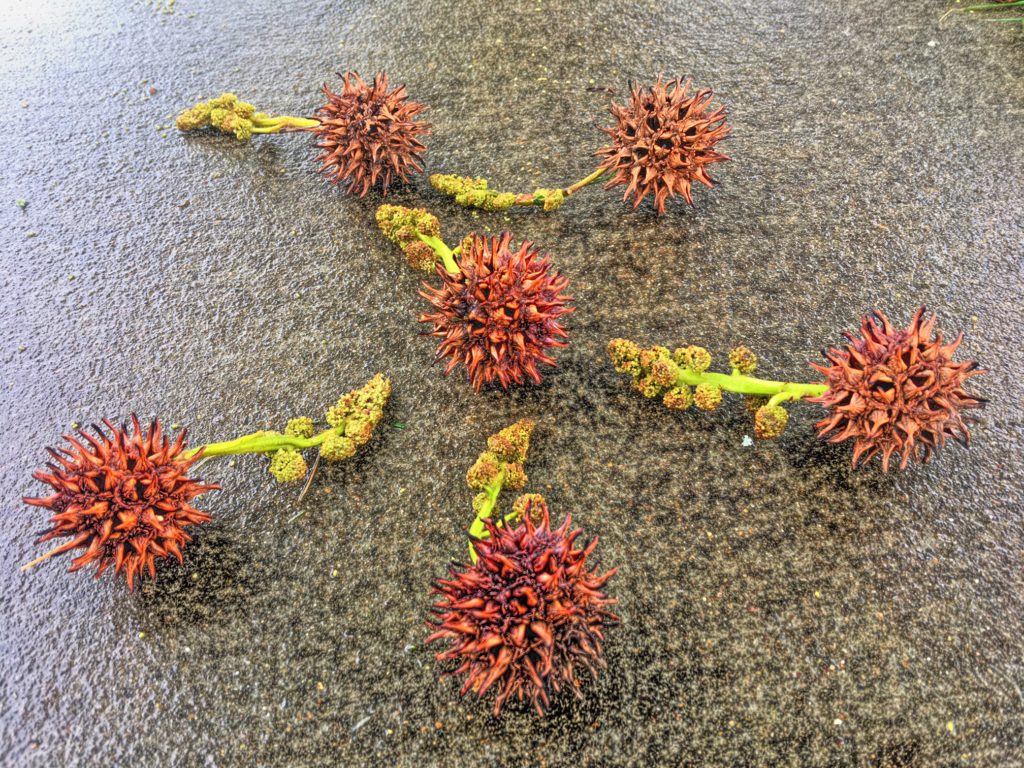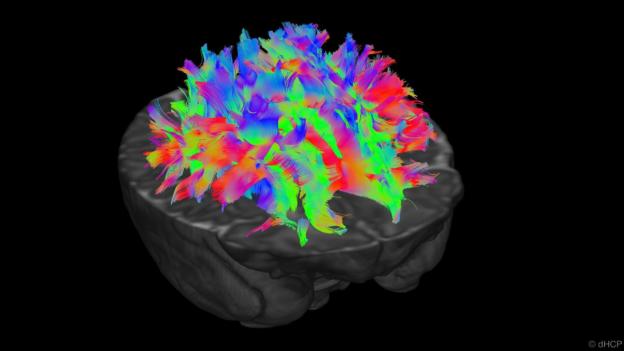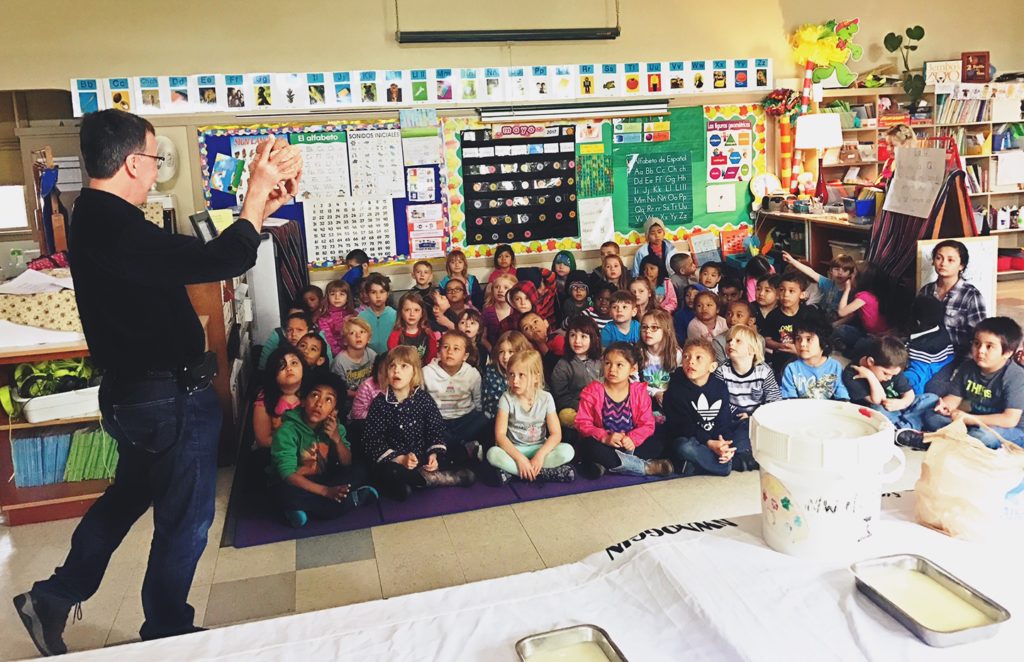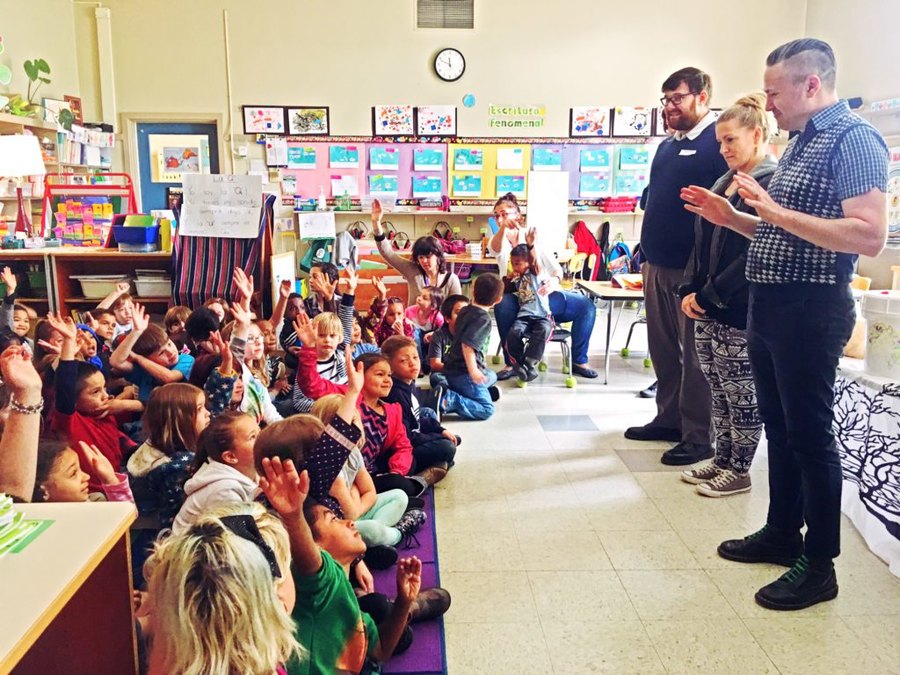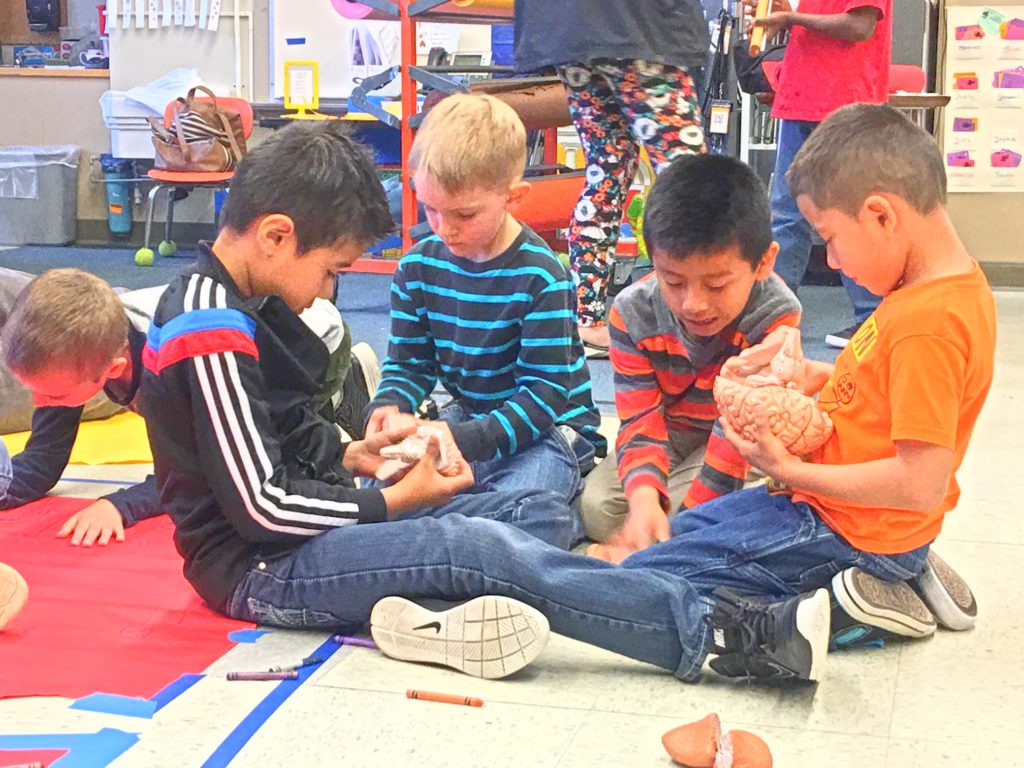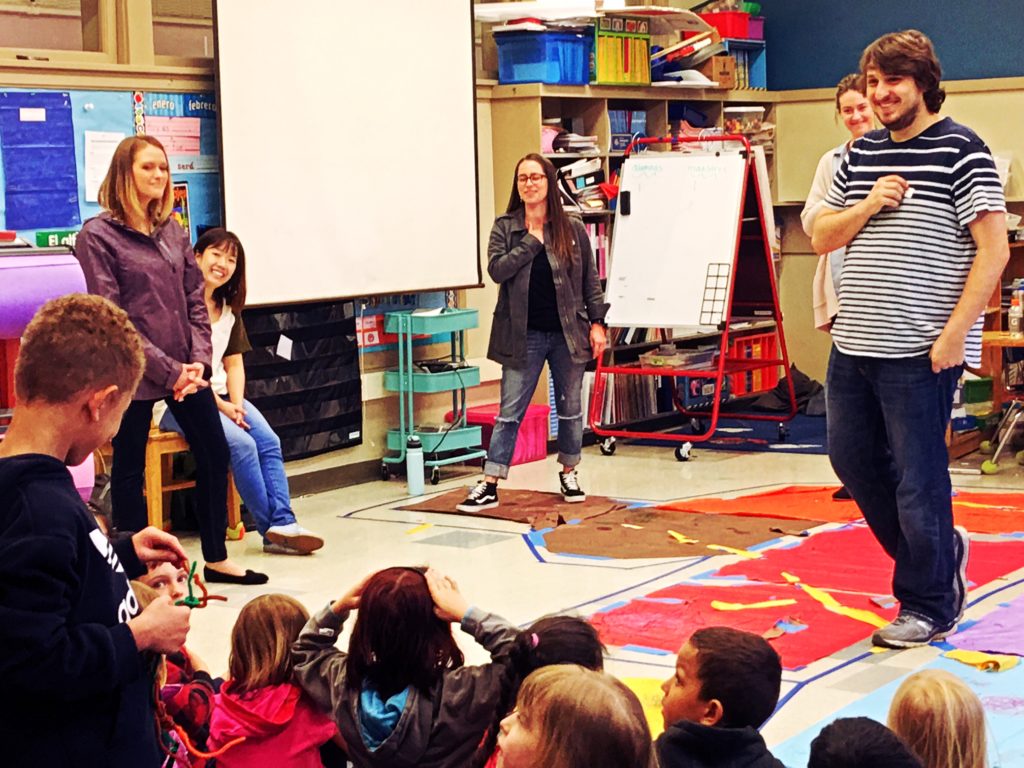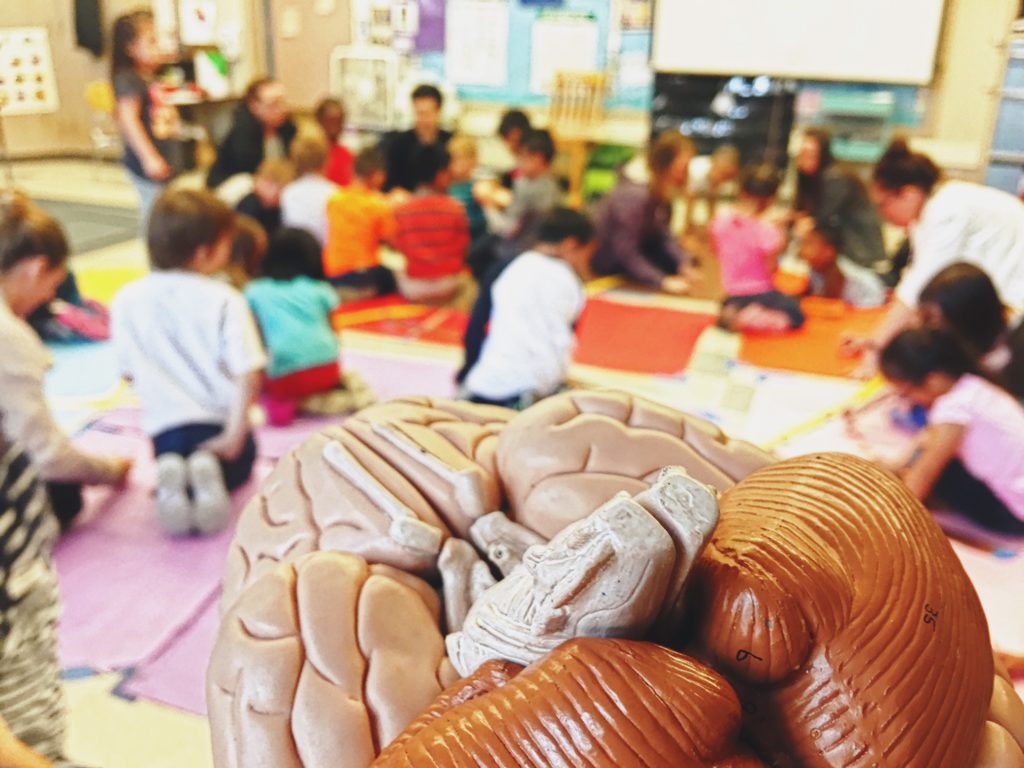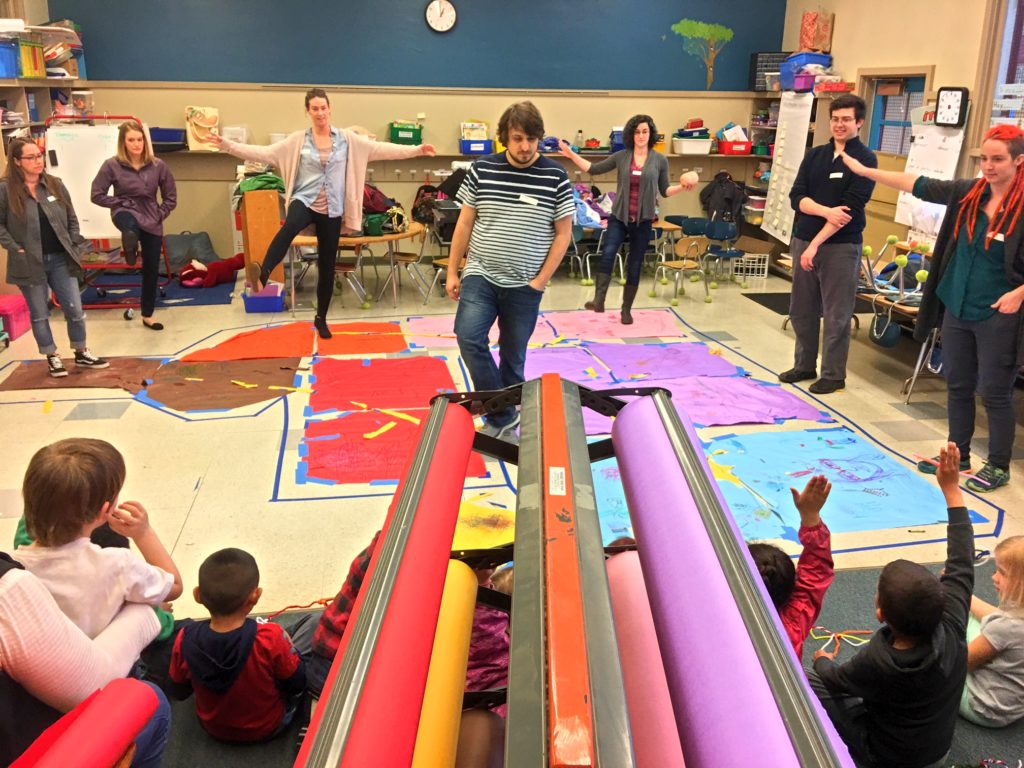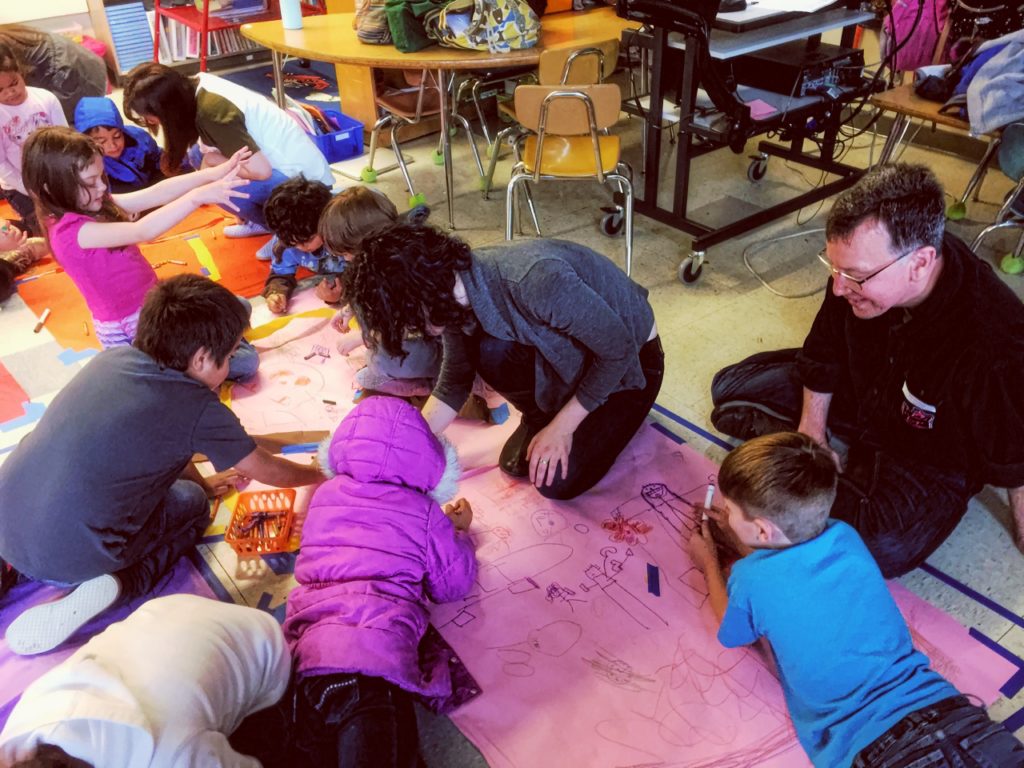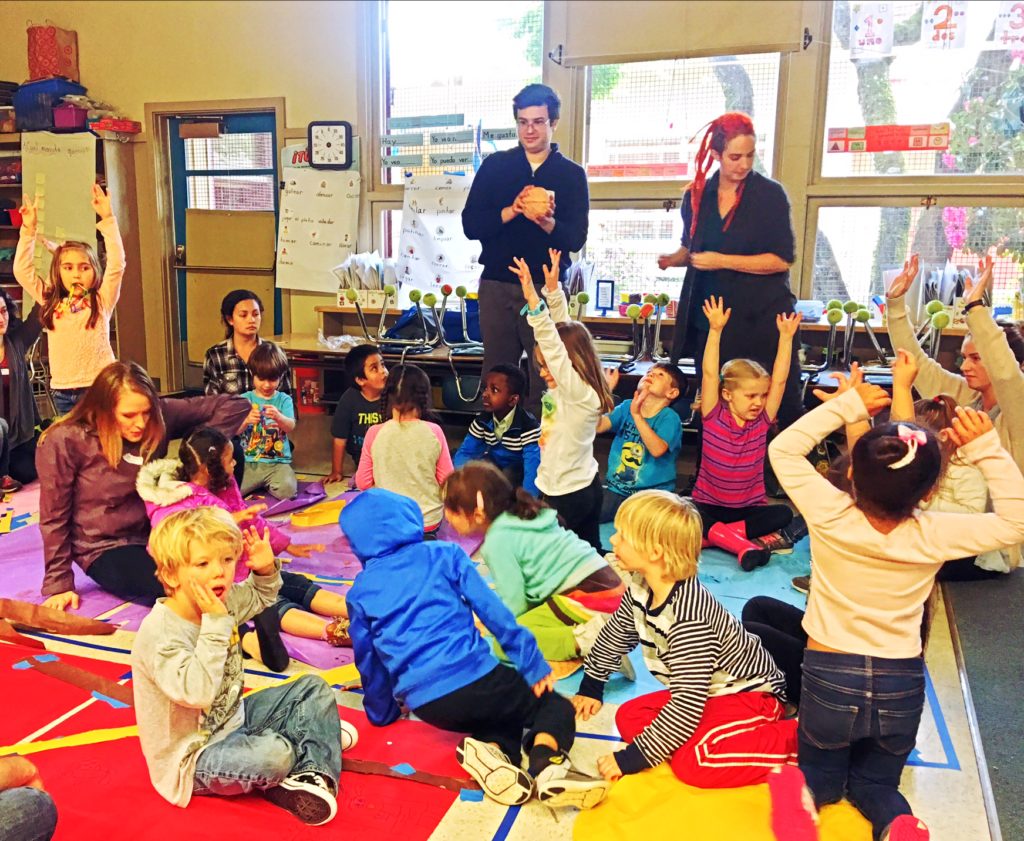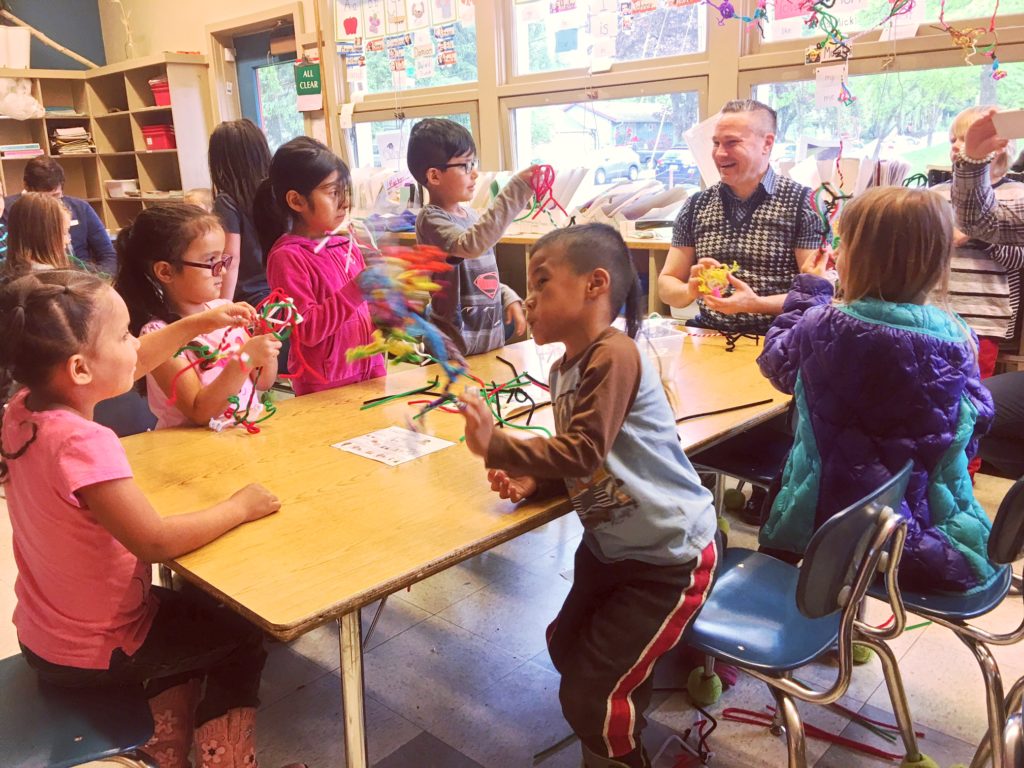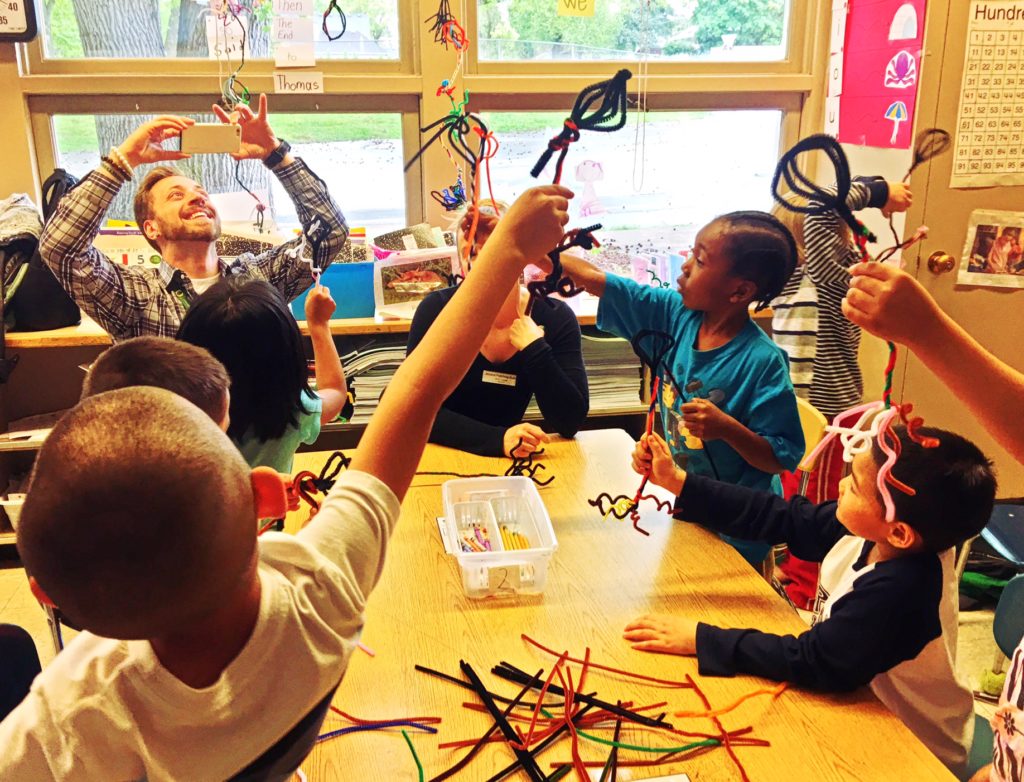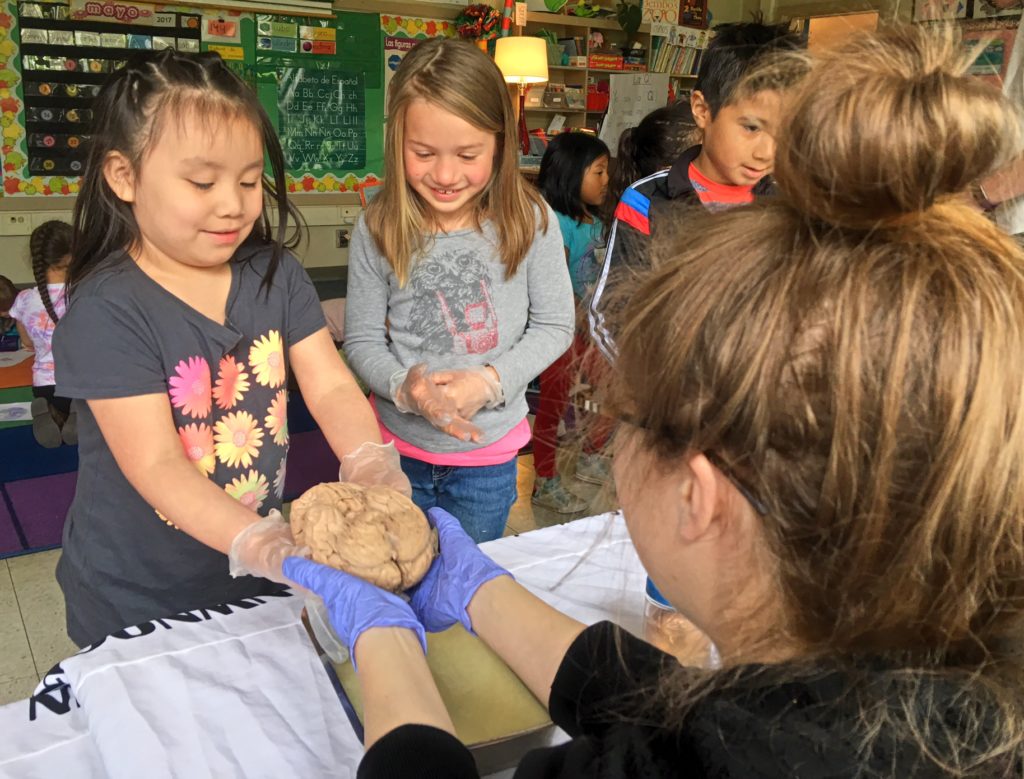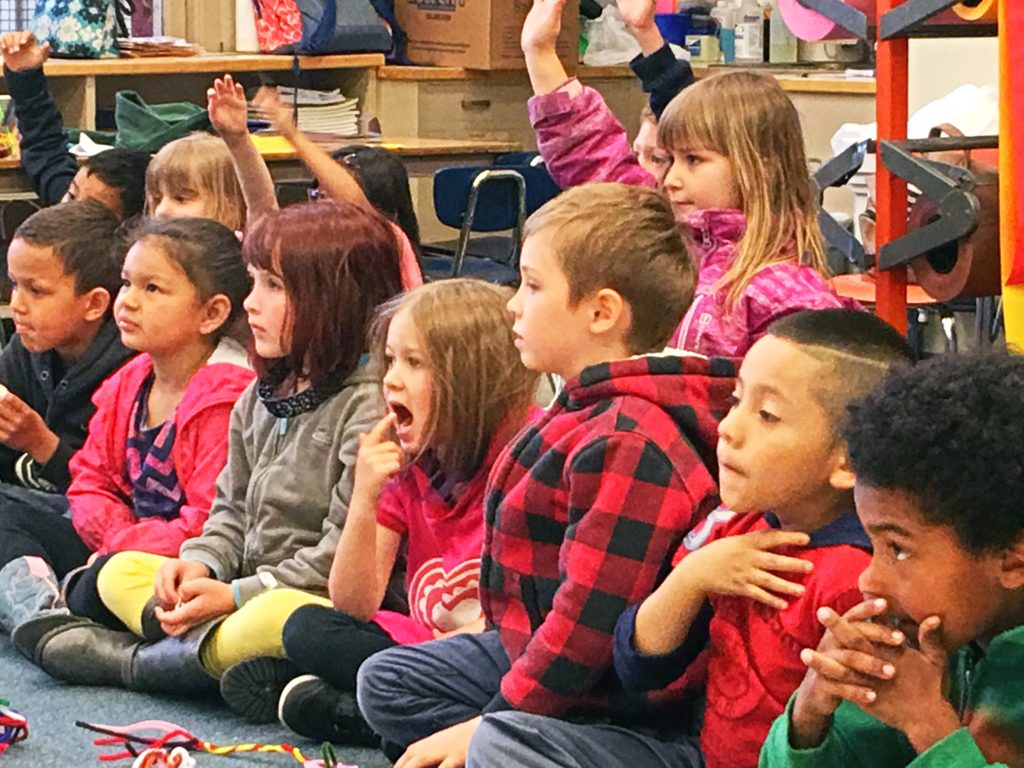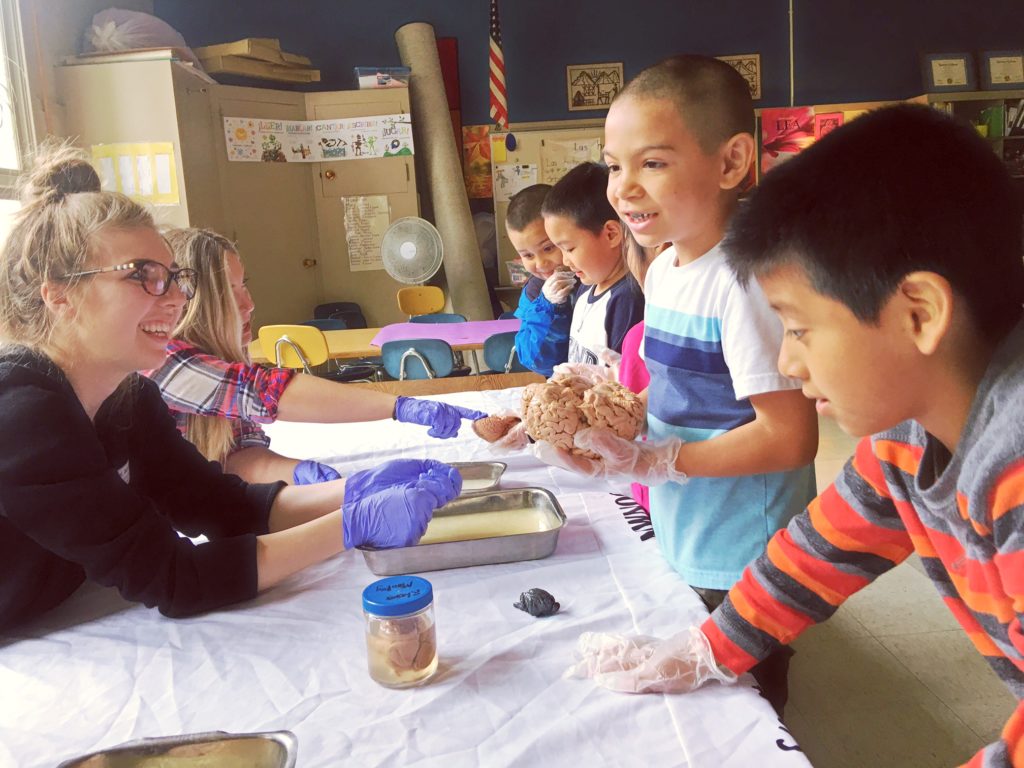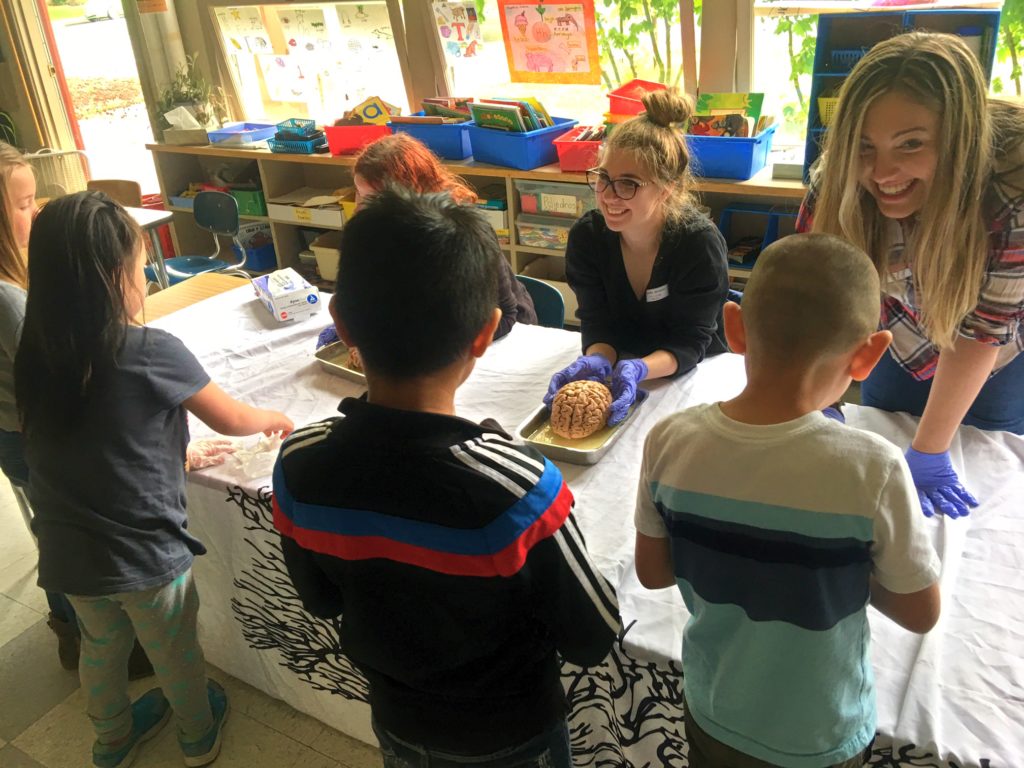Sitton Elementary is a unique educational community in Portland Public Schools with diverse students, including many English language learners and those with Individual Education Programs (IEPs) and special needs in regular classrooms, as well as “co-teachers” helping everyone engage…
LEARN MORE: Educator collaboration keeps all students involved at Portland elementary
“Sitton Elementary… (is) a school that welcomes and nurtures students and families, creating a close-knit and comfortable community. We strive to use our students’ diverse skills and backgrounds to help them reach their greatest potential as learners, leaders, and as agents of change in our school, community, and world.” – Sitton Elementary School website
NW Noggin was warmly welcomed on a wet spring day to Portland’s St. Johns neighborhood by Sitton principal Dana Nerenberg, and teachers Michele Interian, Zulema Valenzuela and Elizabeth Mick. We initially planned to introduce art and neuroscience to kindergarten and first grade classes, but decided to make two separate visits, beginning this week with about 75 kindergartners who were already learning about their brains!
According to their teachers, these inquisitive 5 and 6 year olds had “studied the amygdala, functions of the brain’s hemispheres, learned about dendrites (the basics) and learned about the cerebrum and cerebellum. We have discussed and done exercises with mindful eating and listening, too.!”
Our participants were definitely enthused by how much neuroanatomy the students already knew!
Today’s volunteers included Travis Christian, Allie Clark, Jennifer Jensen, Jessica Patching-Bunch, Jessica Trottier, Krystal Nguyen, Alex Kunz, Rebekah Hough, Austin Abshire, Adam Bishop, and NIH BUILD EXITO scholar Heather Hamilton from Psychology and Biology at Portland State University, Scott Jones and Brittany Alperin from Behavioral Neuroscience at OHSU, and Holly D’Andrea and Christina Williams from WSU Vancouver…
We arrived early to cut up colorful rolls of paper, taping an eye-catching cerebrum (with eyes!) to a classroom floor. We labeled different regions and added some wire-like brain cells, snaking them into neural networks that allow us to carry out complex cognition – networks under development in our young students at Sitton…
The image above is from the Developing Human Connectome Project, showing radiant wiry axons of neurons linking distributed brain regions into functional networks that let us see, hear, feel, attend, decide, remember and act. (The colors represent different directions of information flow).
LEARN MORE: Developing Human Connectome Project
LEARN MORE: A Blueprint of the Emerging Mind (BBC)
LEARN MORE: Functional brain imaging across development
Zulema introduced Noggin, and said that we were ready to answer questions about “the most important tool” we carry with us every day – our brains! Each of us briefly explained who we are and what we study, which took time as we’d brought so many eager volunteers..!
I think this is one of the most powerful and effective aspects of outreach, the novelty and excitement generated by connecting K-12 students, teachers, and university volunteers into a growing community network. Who are these people? What do they study and research? What motivates and enthuses them, and how does our expanding knowledge of the brain offer insight, and direction? What educational and career opportunities are out there, for both K-12 and Noggin volunteers..?
And these are kindergartners – getting their first exposure to students studying and researching brains, and immersive art projects that let them explore some essential structure/function relationships – at such an early age. We are made of something physical, which changes and grows in response to experience, and of course we’d bring out some real brains this morning too. In cerebrums under development, this is bound to leave an impression..!
We split up into three classrooms, and welcomed successive waves of energetic students. In the “brain map space,” we introduced lobes and other structures, including the amygdala, which several kids knew well! Alex, Adam, Brittany, Jessica, Krystal, Austin, Christina and Holly described the functions of different regions, and worked with kids to express what each area did through drawing…
Presentamos algunos aspectos del cerebro y neuronas tanto en inglés como en español…
Illustrating autonomic control of heart rate in the brainstem..!
In the “brain cell room,” Jessica, Scott, Travis and Heather helped students craft their own colorful neurons out of pipe cleaners, twisting out dendrites and axon collaterals with enthusiasm and gusto!
“Who has more brain cells – the adults here or you kids?” “We do!!”
And of course, in the “brain room,” kindergartners got to touch and hold the real thing, with guidance from Allie, Rebekah and Jennifer…
It was a great day at Sitton, with some terrific students…
Many, many thanks to Michele, Zulema, and Lizzy for welcoming us to school! Thanks also to Portland State University and OHSU for their continued support for innovative STEAM teaching and outreach. We look forward to returning to Sitton later this month to meet the first graders on May 25th…





